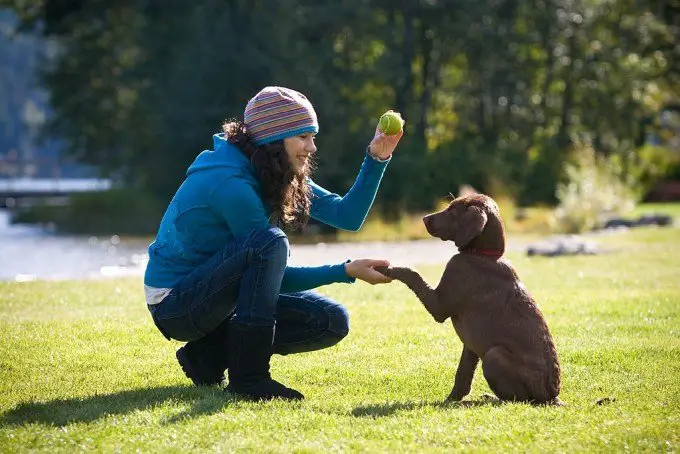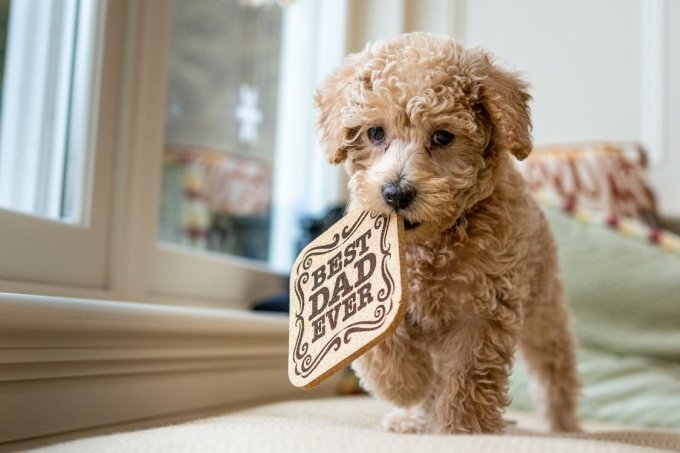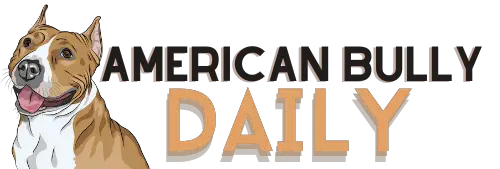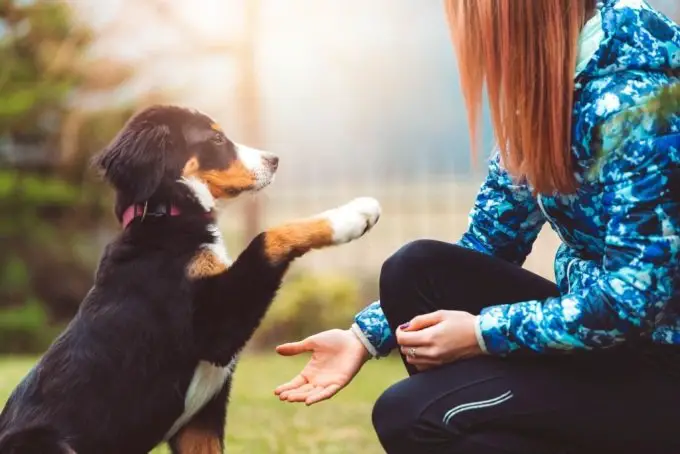It is essential to train your fur-ever friend at an early age. It is an enjoyable and rewarding experience for both of you. There are different methods to train your fur friend, below are helpful tips and simple commands that’ll guide you through training.
Treats For Good Behavior
This act is one of the most effective methods in the Pride and Prejudoodles training guide. This means giving your dog treats as rewards when they do what you want. If you ask them to do something like sit down and do so, you reward them. Whenever they get commands right, shower them with praise, affections, and treats. Tell your dog when he is doing a good job
Work On Dog Time
Dogs have a low attention span, so you have to note teachable moments to train them. Teachable moments are periods when they engage in destructive behaviors. You teach them immediately so they can differentiate between destructive behaviors and good behaviors. Being consistent in repeating training will reinforce what they learned.
Points To Note When Training
- Don’t train when you are grumpy or stressed. Your furry friend can tell when you are in a bad mood. It’s best to train when you’re in a good mood.
- Don’t start training their training in a noisy environment where they’ll get easily distracted. You can proceed to that after they’ve mastered your training.
- Don’t stretch the training for too long. Keep it precise and fun. Always end the training with an exercise your dog loves.
Basic Commands In Dog Training

Name recognition
The art of naming your furry friend is exciting. It’s best to get a short name with a strong ending that they can always hear clearly and recognize. Use their name consistently, and they’ll get used to it.
Sit
This is a prevalent one, and most times, the first command a dog adapts. This is a command that will come in handy on different occasions, whether a guest is around or you simply want them to sit. Dogs need to understand how to sit before the command starts. Always reward with a treat when they obey commands.
Stay
This is an essential command. This works for their safety and the safety of anyone around them. This command needs to be taught early on. To teach this, make them sit then move away when they try to follow, instruct them to stay and when they obey, reward them with a treat.
Come
This should also be one of the first commands; this will guarantee their safety when they go towards danger. This command training deserves patience. A dog must be able to come when called.
Drop it
This command is essential because it can stop your furry friend from harming themselves or destroying household items. This command is very similar to “leave it.” Leave it is often used when walking because dogs are curious. This makes them get into what they shouldn’t, which is why the “leave it” command is essential. This command is non-negotiable and can be achieved using a combination of impulse control and avoidance.
No
This particular command is versatile and will help keep your furry friend out of trouble. When you see them get into mischief, use this command to set them straight. You can use a treat to teach them, place a treat within their reach, and when they go there for it, the command “no,” and when they obey, reward them.
Heel
This is a command that will be used daily, especially during daily walks with your furry friend. This is to ensure a proper walking habit and should be taught at an early stage. This makes your furry friend a dog who walks happily next to you and understands what he’s allowed to do and what he’s not.
Things to discourage when dog training
Jumping
Dogs jumping immediately when they sight a person are often discouraged because it can lead to accidents, especially if they cannot take on the dog’s weight. When your puppy or dog jumps on a person, don’t reprimand them; just turn your back on them, ignore the behavior and wait until they settle down before giving positive reinforcement. Never reward your dog for jumping by patting or praising him or her when they are jumping in place.
Biting and Nipping
Dogs often seem to be having fun when they bite and nip you. An excellent way to discourage your mouthy, furry companion is to sound like you are in a lot of pain when they bite you. A sharp scream should manage this. Most dogs are so surprised that they stop immediately. Also, getting them to chew toys helps.
Chewing

All dogs chew, and it’s an essential activity for them. However, excessive chewing can quickly develop into a behavior problem if you see your dog destroying things. You can correct this by encouraging your dog to chew on the right things by providing plenty of appropriate chew toys and also by keeping personal items away from your dog. When you are not home, keep your dog in an area where less destruction can be caused. Several reasons why dogs chew are teething, boredom, excessive energy, anxiety, and curiosity. If you catch your dog chewing something, it shouldn’t distract your dog with a sharp noise. Then, replace the item with a chew toy. You should ensure that your dog gets plenty of exercises so it can burn off excess energy and remain stimulated rather than chewing constantly.
Digging
This can be a very annoying behavior, and if suitable, most dogs will do some amount of digging; it’s a matter of instinct. Giving them more exercise will wear them out.
Chasing
Dogs chasing moving things is simply a display of predatory instinct. Lots of dogs will chase humans, other animals, and automobiles. All of these can lead to dangerous and devastating outcomes.
Lastly, remember that dogs are incredibly social animals. Still, to become a positive and contributing member of the pack (their human family and their puppy companions), they must learn proper socialization and behavior. You can train your dog to behave well with home training or through obedience training classes. No matter what you choose, quality and consistency must be the main focus.
RELATED POST

